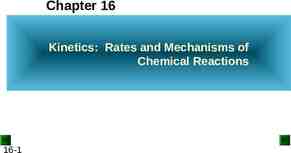Life Cycle Guide to Retirement Planning George F. McClure Career
39 Slides197.00 KB
Life Cycle Guide to Retirement Planning George F. McClure Career & Workforce Policy Committee [email protected]
The Three-Legged Stool Three elements to retirement security: – – – Employer retirement plan Social Security Personal Savings Only 58% in medium, large employer plans Less than 20% in defined benefit plans 63% have retirement savings (in 2001), but – – Mean value of all accounts 95,943 Median value of all accounts 27,000
Phases in Retirement Planning The – – Graduate – Getting started Paying debts Going for the match Family Responsibilities Children to Educate Goal in Sight Managing Millions
You Need a Plan! List assets & liabilities Use Web-based retirement calculators Pick your own economic forecast: – – Rate of return? Rate of inflation? What retirement income will you need? Answer: Savings rate to use
Retirement Planning Calculators Smart Money.com - http://www.smartmoney.com/retirement/ Vanguard.com – Vanguard Retirement Center http://www3.troweprice.com/ric/RIC/eprim TutorialRight.html for fee, close to retirement Fidelity.com – detailed analysis for customers Others: Bloomberg, CNN.Money, www.planningtips.com/cgi-bin/retire.pl
The Graduate? Not “Plastics” – now “401(k) and matching” The secret: Tax-deferred savings and compounding Save as much as you can as early as you can With maximum 15,000 annual 401(k) contribution: – – – – At 8%: 217K from 10 years’ pay-in; 2,187K after 30 more Full 40 years at 15K pay-in, 8% yields 3,886K At 10%: 239K from 10 years pay-in; 4,171K after 30 more Full 40 years at 15K, 10% yields 6,639K 3.3 million in 40 years equals 1 million today, at 3%
Internal Revenue Code 401(k) Available since 1981, now have 2 trillion A defined contribution plan – outcome not guaranteed; 43 million participate You set the course and speed, steer the ship Try to put in 15% of salary ASAP Anti-discrimination tests limit pre-tax feature Investigate fund choices in your plan – diversify - don’t be too conservative (CDs won’t do it)
New Trends in 401(k) Plans More education of employees More choices for investing Daily web updates on asset value Immediate eligibility to contribute Auto. enrollment (but set your own rate) Lifestyle funds – match risk tolerance & time horizon
2006 401K contribution Limits 401K RELATED LIMITS 401k Elective Deferrals 15,000 Annual Defined Contribution Limit 44,000 Annual Compensation Limit 220,000 Catch-Up Contribution Limit 5,000 Highly Compensated Employees 100,000 Social Security taxable income 94,200
2004 Other Contribution Limits NON 401K RELATED LIMITS 403(b)/457 Plans Elective Deferrals 15,000 (to 25% of salary) SIMPLE Employee Deferrals 10,000 SIMPLE Catch-Up Deferral 2,500 SEP Minimum Compensation 450 *SEP Annual Compensation Limit 220,000 Social Security Wage Base now 87,900 SIMPLE Savings Incentive Match Plans for Employees
IRAs- Another Opportunity to Save Individual Retirement Arrangements: save 4K/year ( 5K “catch up” if over age 50), BUT If covered by a retirement plan at work, limited by income level and tax filing status Traditional IRA pay-in may be tax-deductible, taxable on withdrawal (10% penalty if 59.5) Roth IRA pay-in not tax-deductible but retirement payouts not taxable Can roll-over 401(k) proceeds from previous employer See IRS Publication 590 for details
Self-Employed? IEEE Benefits Family dental insurance Professional liability insurance Disability insurance Express delivery discount Discount office supplies Discount computers & software
Benefits for All IEEE Members Term life and level-premium life insurance Short-term medical insurance Home mortgages, movers, realtors Auto & homeowners insurance Umbrella liability insurance Credit cards (including rewards cards) Out-of-country travel insurance
Borrow from 401(k) Plan? Don’t! No matching contributions if a loan is out Must pay loan back if leave the firm Can’t pay it back? – Owe tax due AND 10% penalty
Getting Started Paying down debts? Go for the 401(k) match to start – – Maybe half of your first 6-8% contribution Found money! Student loan: almost all interest on repayment after 2001 now tax deductible (IRS Pub 970) Control use of credit cards Make a budget - try to stick to it Avoid paying for heavy auto depreciation – 3 year old “pre-owned” off-lease may have rest of maker warranty
Asset Allocation Need – – – – – – uncorrelated fund choices, such as: Large capitalization stock fund (S&P 500) Mid-cap stock fund Small-cap fund International stock fund Fixed income (corp./govt. bond) fund Self-directed brokerage account may be a choice for you Watch fund expense ratios (Morningstar)
The Third Leg of the Stool Set up own tax-deferred savings plan – – Get 23.3% more from income tax deferral ( 60K salary, single taxpayer) No deferral from FICA and Medicare tax Start early! You’ll get half your nest egg in first decade In 40 years, need 163K to equal 50K today (at 3% inflation rate); or 240K (at 4%) Will need assets of 2.5M in 40 yrs. to equal today’s 60K/yr for 25 yrs. at 6%
Social Security Trends Operates on pay-as-you go basis Current workers pay for retirees Baby boom retirees will stress the system Expect full retirement age to rise from 67 to 70 Proposals to “privatize” part of SS account Payroll tax 15.3% (you pay half) – – 12.4% SS (FICA), on first 94,200 (for 2006) 2.9% Medicare tax on all wages (no cap)
Mid-Career Course Correction Live 20% - 25% below your means Max out on 401(k) 15% (if part after-tax, growth still tax-deferred) IRA contribution every January 2 (Roth is best – growth never taxed; inheritable) Tax-deferred variable annuities? (Watch fees) Build after-tax savings: for education, vacations, kids’ college; avoid high credit costs
Speed Up Paying Off Mortgage? Pro: – – Cut 7 years off 30 year mortgage Build equity faster for possible loan Con: – – Bi-weekly payments Takes one more monthly payment/yr. May prevent maxing out on 401(k) plan Mortgage interest still tax-deductible Refinance first, at record low interest rates Straddle: Make extra principal payments
Changing Jobs? Whence – – – the old 401(k) assets? Leave them in old employer’s plan? Move them to new employer’s plan, when eligible? Roll over into a IRA? Depends – -investing choices: good or bad? Rollover: trustee-to-trustee; separate from other IRAs you may have
Growing After-tax Savings Tax-efficient mutuals (e.g., index funds) Stocks to buy and hold forever (which?) Income real estate – – – – – Tax return ‘losses’ while building equity Inflation hedge for retirement income Tax-free exchanges possible Part-time business in retirement Step-up in cost basis at death
Moonlighting? Any self-employment income on the side? – Qualifies for another retirement plan – Keogh or SEP: 20% of profit up to 44K (2006) Your own sideline business? Save up to 10K/yr in SIMPLE 3% match Can be 100% of the business profit – More successful sideline? Custom defined benefit plan – Section 415 tests Fund annual benefit over 150K See IRS Publication 560 (www.irs.gov )
Roth IRA Conversions Can convert IRA to Roth IRA by paying the tax due (can use separate funds for taxes) Must have modified AGI 100K for year No early withdrawal penalty 59-1/2 Further growth of funds forever tax-free; can pass with estate at death No minimum distributions due during lifetime
Recent: Cash Balance Pension Plan Credited each year, percent of salary interest Individual “account” inherently portable Fully vested in 5 years Popular with young workers Insured as defined benefit plan under ERISA Problem in conversion for older workers: CAP benefit lower than former FAP benefit More information: http://www.dol.gov/ebsa/faqs/faq consumer cashbalanceplans.html
Pension Plan Outlook Retirees living longer: 21 years now vs. 11.5 years in 1950 – raises plan liabilities Corporations seeking relief may freeze defined benefit plans – switch to defined contribution plans Best firms offer both, but no new DB plans Cash balance plan conversions rampant now Some high tech firms offer only stock options
Saving Pension Plans? Pension Protection Act signed in August 2006 Amends Employment Income Retirement Security Act of 1974 (ERISA) Major changes: liberalized contributions Opt-out for 401(k) plans, not opt-in Employer match may vest in 3 years vice 5 years Roth 401(k) made permanent Employee education from employer
Paying Off Credit Card Balances If – – – – sizeable balances after graduation: Consider low-APR cards for fee www.bankratemonitor.com Transfer balances from high-APR cards Pay off credit cards ASAP – and promptly GAO study: penalties increasing for late payment 35% pay late fees (two-cycle hazard) – 13% pay over-limit fees – – http://www.gao.gov/cgi-bin/getrpt?GAO-06-929
Senior/Grad Student Loans Average senior loan debt of 17,140, and Average senior credit card debt of 3,262 20,402 to pay off* Median credit card debt 2,185 31% of seniors have credit card balances between 3,000 and 7,000; 9% 7,000 * Nellie Mae, 2001 Graduate school: added 31,700 in loans
Paying Off College Loans Almost all loan interest on repayment is tax-deductible, depending on MAGI and tax status (see IRS Pub. 970) Consolidation of your loans okay, but beware of combining with your spouse’s loans – Each could be liable for the other’s loan if you split Typical: 125/month per 10,000; can revise payment plans annually Obligation not eliminated in bankruptcy For details, see “Student Loans” at http://www.nolo.com/lawcenter/ency/index.cfm
Afford to Retire? Totaling assets, note future value of a 30K pension over 20 years can be 840K @ 7%; a 1.2K/month Soc. Sec. benefit is worth over 200K – more with the COLA Soc. Sec. for spouse stepped up on death of primary earner Consider smaller house; could clear 500K tax-free on sale
Keep Working? You may not want to stop everything; part-time work is stimulating; income could be welcome 30% of retiree-age keep working for pay, at least parttime 70% of pre-retirees say they would like to (EBRI survey) 70% of pre-retirement income not enough for some – 100% more like it Future not likely to continue present low inflation
Retiree Concerns Social Security earnings penalty at 65 repealed Cannot contribute to IRAs past age 70-1/2 No age limit to contribute to Roth IRAs with earned income Mandatory distributions from IRAs start at 701/2 (could be 75 in future)
X, Y Gen., Echo Boomer Concerns Government entitlement program cutbacks Employer reductions – – Retirement benefits Health care benefits Greater self-reliance required
Summary Start retirement savings early – time is now on your side Save 20% from salary to pay off debts, fund retirement plans, make down payments for house and cars, and for a rainy-day cushion Always get the employer’s fund match Read The Millionaire Next Door, Stanley & Danko, Stocks for the Long Run, Jeremy J. Siegel, and Ten Tax-Favored Ways to Save for Retirement at http://www.ieeeusa.org/careers/Guidelines/available.html You have the tools – good luck!
Comparative Purchasing Power
2003 Retirement Confidence Survey Three in ten have not saved for retirement One-third not confident about enough money for retirement Fewer that 40% have calculated how much money they will need to save by the time they retire Life expectancies at age 65: o Women, 19.2 years, on average o Men, 16.3 years, on average
Expected Longevity - Years Age Male Female Joint & Survivor 65 70 80 90 100 15.0 12.1 7.5 5.2 2.1 18.2 15.0 9.6 5.7 3.1 22.0 18.3 11.9 7.0 3.3 Source: IRS Publication 939 - Pensions and Annuities Note: U.S. Public Health Service shows higher spans
Lifestyle Effect on Longevity Long – form: www.livingto100.com Answer questions about family, health, nutrition, exercise, etc., for estimate and 15-page report on improving the number Short form: when and where were you born? http://home.worldonline.dk/eskemj - Gives a time for your demise, to the second












































